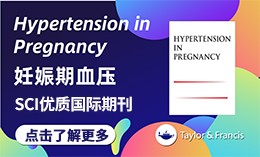-
Full-length transcriptome and co-expression network analysis reveal molecular mechanisms of seed development in Elymus sibiricus Seed Sci. Res. (IF 2.1) Pub Date : 2024-05-16 Yuying Zheng, Xiaoshan Lin, Wengang Xie, Wenxian Liu
Grass seeds play a critical and fundamental role in grass breeding and production. Elymus sibiricus L. is a widespread Poaceae forage grass in northern Eurasia which is used for ecological restoration and forage production. Sucrose is the main source of substrate and energy required for starch synthesis in the seeds, so the hydrolysis of sucrose determines and influences starch synthesis and filling
-
Seed permeability: an essential trait for classifying seed dormancy type Seed Sci. Res. (IF 2.1) Pub Date : 2024-05-09 Lindsay A. McCulloch, James W. Dalling, Paul-Camilo Zalamea
Seed dormancy in plants can have a significant impact on their ecology. Recent work by Rojas-Villa and Quijano-Abril (2023) classified the seed dormancy class in 14 plant species from the Andean forests of Colombia by using germination trials and several microscopy techniques to describe seed anatomy and morphology. The authors conclude that Cecropia species have both physical and physiological dormancy
-
Proteomic characterization of the different stages of seed germination in Cupressus gigantea Seed Sci. Res. (IF 2.1) Pub Date : 2024-05-03 Jianxin Li, Subin Zhang, Pei Lei, Tong-Ju Eh, Yu Zhang, Guangze Jin, Kun Dong, Qijiang Xu, Qiuxiang Luo, Fanjuan Meng
Seed germination is a pivotal period of plant growth and development. This process can be divided into four major stages, swelling absorption, seed coat dehiscence, radicle emergence and radicle elongation. Cupressus gigantea, a tree native to Tibet, China, is characterized by its resistance to stresses such as cold, and drought, and has a high economic and ecological value. Nevertheless, given its
-
Genome-wide association study on seed dormancy in barley Seed Sci. Res. (IF 2.1) Pub Date : 2024-04-30 Gaofeng Zhou, Lee-Anne McFawn, Xiao-qi Zhang, Tefera Tolera Angessa, Sharon Westcott, Chengdao Li
Seed dormancy is an important trait associated with pre-sprouting and malting quality in barley. Genome-wide association studies (GWASs) have been used to detect quantitative trait loci (QTLs) underlying complex traits in major crops. In the present study, we collected 295 barley (Hordeum vulgare L.) accessions from Australia, Europe, Canada and China. A total of 25,179 single nucleotide polymorphism
-
Differences in germination traits of time-separated seed collections of dry forest species from Central Zambia and the potential role of climate Seed Sci. Res. (IF 2.1) Pub Date : 2024-04-24 Emmanuel N. Chidumayo
Time-separated seed collections with a separation period of 12–18 years were used to study recent changes in germination traits and the role of climate factors in seven tropical dry forest (TDF) woody species in Zambia, southern Africa. In all the species, peak and final germination were lower in recent (2016–2021) seed collections than in historic (1998–2005) seed collections during the first germination
-
Can alpine species take the heat? Impacts of increased temperatures on early life stages Seed Sci. Res. (IF 2.1) Pub Date : 2024-04-22 Alexandra E. Seglias, Michelle DePrenger-Levin
Alpine plant species are particularly vulnerable to climate change. Temperature fluctuations are projected to be most severe at high elevations. Even small shifts in temperature have major consequences on phenology, reproduction, and community composition. Early life stages are arguably the most important processes in the fitness of an individual plant and the dynamics and persistence of plant populations
-
Phylogenetic trends in TZ staining analysis of six deep dormancy seeds Seed Sci. Res. (IF 2.1) Pub Date : 2024-04-15 Chen Yin Peng, Yu Wu, Wen Hui Huang, Zhi Yun Deng, Xiao Rui Sun, Ming Zhu Wang, Hugh W. Pritchard, Yong Bao Shen, Jin Ya Xu, Xiang Yu Yu, Cong Cong Guo
The assessment of seed quality and physiological potential is essential in seed production and crop breeding. In the process of rapid detection of seed viability using tetrazolium (TZ) staining, it is necessary to spend a lot of labour and material resources to explore the pretreatment and staining methods of hard and solid seeds with physical barriers. This study explores the TZ staining methods of
-
Redox imbalance accompanies loss of viability in seeds of two cacti species buried in situ Seed Sci. Res. (IF 2.1) Pub Date : 2024-04-15 David A. Guzmán-Hernández, Claudia Barbosa-Martínez, Juan M. Villa-Hernández, Laura J. Pérez-Flores
This work provides insights into the deterioration of cacti seeds of Escontria chiotilla (F.A.C. Weber ex K. Schum) and Stenocereus pruinosus (Otto ex Pfeiff.) Buxbaum stored ex situ at 25 °C, under dry and dark conditions or buried in situ conditions in a xerophytic shrubland. Viability, germination speed, electrolyte leakage and indicators of the redox balance including glutathione content, glutathione
-
Likelihood ratio test for the analysis of germination percentages Seed Sci. Res. (IF 2.1) Pub Date : 2024-04-02 Yongha Rhie, Soyeon Lee, Hohsuk Noh
The germination percentage (GP) is commonly employed to estimate the viability of a seed population. Statistical methods such as analysis of variance (ANOVA) and logistic regression are frequently used to analyse GP data. While ANOVA has a long history of usage, logistic regression is considered more suitable for GP data due to its binomial nature. However, both methods have inherent issues that require
-
Interactions between seed functional traits and environmental factors and their influence on germination performance of Australian native species Seed Sci. Res. (IF 2.1) Pub Date : 2024-03-25 Fernanda C. Beveridge, Alwyn Williams, Robyn Cave, Sundaravelpandian Kalaipandian, Buddhi Dayananda, Steve W. Adkins
Climate variability is expected to increase due to climate change, with projected increases in temperature and erratic rainfall patterns. These changes will alter the environmental cues sensed by seeds, and therefore will impact plant recruitment. This study investigated the effects of seed functional traits (germinability, germination time, synchrony and seed mass) on germination responses of several
-
The re-establishment of desiccation tolerance in germinated tomato (Solanum lycopersicum) seeds Seed Sci. Res. (IF 2.1) Pub Date : 2024-03-01 Naoto Sano, Jerome Verdier
Desiccation tolerance (DT) of seeds, one of the plant's environmental adaptation mechanisms, allows them to survive as seeds in a quiescent state under extremely water-deficient conditions during the plant's life cycle, followed by seed germination and seedling establishment under favourable water conditions. The seed-DT is lost after radicle emergence; however, there is a developmental period called
-
A classification system for seed (diaspore) monomorphism and heteromorphism in angiosperms Seed Sci. Res. (IF 2.1) Pub Date : 2024-02-22 Jerry M. Baskin, Carol C. Baskin
‘Seed heteromorphism’ is a broadly- and loosely-defined term used to describe differences in size/mass, morphology, position on mother plants and ecological function (e.g. dispersal, dormancy/germination) of two or more seeds or other diaspores produced by an individual plant. The primary aim of this review paper was to characterize via an in-depth classification scheme the physical structural design
-
Your P-values are significant (or not), so what … now what? Seed Sci. Res. (IF 2.1) Pub Date : 2024-02-16 Héctor E. Pérez
Statistical significance, or lack thereof, is often erroneously interpreted as a measure of the magnitude of effects, correlations between variables or practical relevance of research results. However, calculated P-values do not provide any information of this sort. Alternatively, effect sizes as measured by effect size indices provide complementary information to results of statistical hypothesis
-
Population size is not a reliable indicator of seed germination Seed Sci. Res. (IF 2.1) Pub Date : 2024-02-05 Jerry M. Baskin, Carol C. Baskin
Small isolated plant populations are one of the consequences of fragmentation of natural habitats by humans. We asked what effect does the creation of smaller populations from larger ones has on the plant fitness-related trait seed germination. Using information on 119 species (142 species entries) in 50 families, we found that seeds in only 35.2% of the species entries from larger populations germinated
-
Dry storage alters intraspecific variation in phenotypic traits at early life stages: evidence from a dominant alpine meadow species Seed Sci. Res. (IF 2.1) Pub Date : 2024-02-01 Dali Chen, Haiying Yuan, Jinglong Bao, Xiaohua Zhao, Xiuzhen Fu, Xiaowen Hu
The intraspecific variations of phenotypic traits in the early life stages, such as seed germination and seedling establishment, are important components affecting species adaptation and differentiation. As one of the most common ways in which seeds are maintained, dry storage usually affects these traits, by either increasing or decreasing variation among populations. However, little is known about
-
Overcoming major barriers in seed ecology research in developing countries Seed Sci. Res. (IF 2.1) Pub Date : 2024-01-03 Fernando A. O. Silveira, Lisieux Fuzessy, Shyam S. Phartyal, Roberta L. C. Dayrell, Filip Vandelook, Jerónimo Vázquez-Ramírez, Çağatay Tavşanoğlu, Mehdi Abedi, Sershen Naidoo, Diana C. Acosta-Rojas, Si-Chong Chen, Diana M. Cruz-Tejada, Gehan Jayasuryia, Carlos A. Ordóñez-Parra, Arne Saatkamp
Scientists are becoming increasingly aware that disparities in opportunities for conducting and publishing research among scientists living under different socio-economic contexts have created pervasive biases and long-lasting impacts on our views of the natural world. These disparities are challenging the establishment of a global research agenda for a variety of disciplines, including seed ecology
-
Germination niche of a pioneer woody species (Manihot grahamii hook.): a strategy of seed heat stimulation to cope with disturbance in dry subtropical forests Seed Sci. Res. (IF 2.1) Pub Date : 2023-11-10 Sebastián R. Zeballos, Paula Venier, Mariana Pereyra, Denise Simian, Guillermo Funes
Light and temperature conditions trigger germination in specific temporal windows and microhabitats, thus determining the germination niche of plant species. Manihot species grow in fire-prone ecosystems and their seeds show heat tolerance. Successful establishment in disturbed environments might be related to seed attributes that allow seeds to cope with or avoid stressful environments. We studied
-
Palmitoylation mediates the proteolysis of seed storage proteins during the cooling process in hydrated lettuce seeds (Lactuca sativa) Seed Sci. Res. (IF 2.1) Pub Date : 2023-09-11 Ying Yu, Yingying Han, Yujiao Ding, Weijie Li, Ganesh K. Jaganathan, Baolin Liu
Palmitoyl-protein thioesterase (PPT), involved in the fatty acid synthesis and the de-palmitoylation of protein, was induced under ecological cooling treatment in hydrated lettuce seeds. However, there was no significant difference in fatty acid levels between the control and the cooled samples. To further study the function of PPT, 2-bromopalmitic acid (2-Bp), an inhibitor of protein palmitoylation
-
The rudimentary embryo: an early angiosperm invention that contributed to their dominance over gymnosperms Seed Sci. Res. (IF 2.1) Pub Date : 2023-08-11 Carol C. Baskin, Jerry M. Baskin
In this review, we explore the origin of the rudimentary embryo, its relationship to other kinds of plant embryos and its role in the diversification of angiosperms. Rudimentary embryos have a length:width ratio of ≤2.0, and they have organs, including cotyledon(s) and a primary root. A literature survey failed to reveal rudimentary embryos in the pre-angiosperms, suggesting that this kind of embryo
-
Contrasting seed moisture sorption behaviour between two species and the implication for seed longevity Seed Sci. Res. (IF 2.1) Pub Date : 2023-07-21 Shabnam Rezaei, Julia Buitink, Fiona R. Hay
Understanding seed moisture desorption and adsorption isotherms is important for seed quality maintenance and better predicting seed storage lifespan. Freshly harvested oilseed rape and barley seeds were dried and then rehydrated twice. Seed equilibrium relative humidity (eRH) and moisture content (MC) were determined at different humidity levels so that two cycles of desorption and adsorption could
-
Seed anatomy and dormancy class of 14 species from the Andean montane forests of Colombia Seed Sci. Res. (IF 2.1) Pub Date : 2023-06-27 Jose M. Rojas-Villa, Mario A. Quijano-Abril
Seed dormancy is a key trait used around the world to help understand the ecological dynamics of plant species, however, in some ecosystems such as the Andean forests of Colombia, the identification of dormancy class remains poorly known. To address this, we described the morphology, anatomy and dormancy class of the seeds and fruits of 14 species using microtome sections, light microscopy and scanning
-
Seed dormancy diversity of the mangrove plant community in Sri Lanka to assist in direct seeding and seedling transplanting restoration Seed Sci. Res. (IF 2.1) Pub Date : 2023-06-06 Malaka M. Wijayasinghe, K.M.G. Gehan Jayasuriya, C.V.S. Gunatilleke, I.A.U.N. Gunatilleke, Jeffrey L. Walck
Mangroves are one of the most important ecosystems in the world being found in the tropical–subtropical belt. Despite their significance, they have been highly disturbed due to many anthropogenic and natural causes. A significant effort has been made to restore mangroves around the world. However, a lack of information on the seed biology of mangrove species has impeded restoration. Thus, this study
-
Seed dormancy break and germination by a rare relict of the Würmian glaciation in the Iberian Peninsula: Euonymus latifolius (Celastraceae) Seed Sci. Res. (IF 2.1) Pub Date : 2023-06-01 A. Santiago, J. M. Herranz, P. Ferrandis
Southern European peninsulas have repeatedly played notable roles as refuges in the natural history of flora during periods of glaciation. Euonymus latifolius (Celastraceae) is a relict species from the last Würmian glaciation in the Iberian Peninsula. It still lives with isolated populations in favourable, cool mountainous microhabitats, being an extremely rare, critically endangered species. These
-
Transcriptome sequencing analysis revealing the potential mechanism of seed germination in Pulsatilla chinensis (Bunge) Regel Seed Sci. Res. (IF 2.1) Pub Date : 2023-05-11 Yanjing Dong, Shouwen Zhang, Qian Qin, Yating Cai, Danyang Wu
Pulsatilla chinensis (Bunge) Regel has been widely used in the pharmaceutical industry. With the deepening of clinical application, the research on its plant resources has attracted much attention. However, the underlying molecular mechanisms of distinct germination during Pulsatilla seed development are still mostly unknown. Therefore, in this study, four germination stages of P. chinensis seeds,
-
Seed dormancy in Asteraceae: a global vegetation zone and taxonomic/phylogenetic assessment Seed Sci. Res. (IF 2.1) Pub Date : 2023-04-17 Carol C. Baskin, Jerry M. Baskin
The Asteraceae with up to 30,000 species occurs on all continents except Antarctica and in all major vegetation zones on earth. Our primary aim was to consider cypselae dormancy-break and germination of Asteraceae in relation to ecology, vegetation zones and evolution. Cypselae are desiccation-tolerant and in various tribes, genera, species and life forms of Asteraceae are either non-dormant (ND) or
-
Seed germination of Cistanche armena (Orobanchaceae), a rare endangered holoparasitic species endemic to Armenia Seed Sci. Res. (IF 2.1) Pub Date : 2023-03-23 Yuliya Krasylenko, Adelá Hýlová, Yevhen Sosnovsky, Markéta Ulbrichová, Lukáš Spíchal, Renata Piwowarczyk
The obligate root parasite Cistanche armena is a recently rediscovered, extremely rare endangered species endemic to Armenia, specifically parasitizing camelthorn (Alhagi maurorum, Fabaceae) and saltwort (Salsola dendroides, Chenopodiaceae). Its populations are reputedly declining due to habitat destruction and biotic impacts. Since the only known means of its reproduction is via the seeds, understanding
-
Rice seed longevity in the context of seed moisture contents and hypoxic conditions in the storage environment Seed Sci. Res. (IF 2.1) Pub Date : 2023-02-16 Ayesha Tahir, Irfan Afzal, Ehsan Khalid, Maryam Razzaq, Mian Abdur Rehman Arif
Cumulative oxidation of cellular macromolecules during storage reduces seed longevity. This study was undertaken to unravel the physiological and biochemical changes in rice seeds that contribute to deterioration during storage. Rice seeds maintained at three different seed moisture contents (SMC; 10, 12 and 14%) were stored in airtight glass jars. Half of the jars were flushed with nitrogen gas to
-
Non-deep simple and deep simple morphophysiological dormancy in seeds of three species of Ilex from subtropical and tropical regions of Taiwan Seed Sci. Res. (IF 2.1) Pub Date : 2023-02-09 Chiung-Pin Liu, Shun-Ying Chen, Carol C. Baskin, Ching-Te Chien
Dormancy-breaking requirements and level of morphophysiological dormancy (MPD) were determined for seeds of Ilex formosana and I. uraiensis from the subtropical region, and seeds of I. rotunda from both the subtropical and tropical regions of Taiwan. We hypothesized that some Ilex species would have deep simple MPD broken by warm stratification. Germination of seeds and embryo growth was monitored
-
Spectral imaging and chemometrics applied at phenotyping in seed science studies: a systematic review Seed Sci. Res. (IF 2.1) Pub Date : 2023-01-26 Thomas B. Michelon, Elisa Serra Negra Vieira, Maristela Panobianco
The evaluation of the genetic quality of a seed lot is crucial for the quality control process in its production and commercialization, as well as in the identification of superior genotypes and the verification of the correct crossing in plant breeding programmes. Current techniques, based on the identification of seed morphological characteristics, require skilled analysts, while biochemical methods
-
Environmental predictors of seed germination in two Halocnemum species from Mediterranean (Balearic, Tyrrenic and Adriatic) and Red Sea coastal salt marshes Seed Sci. Res. (IF 2.1) Pub Date : 2023-01-09 Pilar Soriano, Elena Estrelles, M. Isabel Martínez-Nieto, Antonio Doménech-Carbó, Marco Galiè, Edoardo Biondi
Reproductive strategies for specific populations are closely related to environmental factors. Consequently, they are fundamental for conservation plans and the management of threatened habitats like salt marshes. From this viewpoint, germination strategy under different temperatures and salt conditions, voltammetric parameters and molecular analysis were performed and compared in six Halocnemum populations
-
Seed ecology of post-fire flowering species from the Cerrado Seed Sci. Res. (IF 2.1) Pub Date : 2022-12-16 Hudson G.V. Fontenele, Heloisa S. Miranda
Post-fire flowering (PFF) species resprout, flower and disperse seeds within weeks after fire. This may be an important strategy to recruit new individuals and colonize the gaps opened by fire. The seeds released in the post-fire environment may interact with byproducts derived from plant burning, and the resulting ash may have compounds that can promote the germination of various seeds, particularly
-
(Epi)genetic control of secondary seed dormancy depth and germination in Capsella bursa-pastoris Seed Sci. Res. (IF 2.1) Pub Date : 2022-11-29 Sara Gomez-Cabellos, Peter E. Toorop, Eduardo Fernández-Pascual, Pietro P. M. Iannetta, Hugh W. Pritchard, Anne M. Visscher
Despite the importance of secondary dormancy for plant life cycle timing and survival, there is insufficient knowledge about the (epigenetic) regulation of this trait at the molecular level. Our aim was to determine the role of (epi)genetic processes in the regulation of secondary seed dormancy using natural genotypes of the widely distributed Capsella bursa-pastoris. Seeds of nine ecotypes were exposed
-
Seed dormancy concepts in orchids: Dendrobium cruentum as a model species Seed Sci. Res. (IF 2.1) Pub Date : 2022-11-21 Sasikarn Prasongsom, Kanchit Thammasiri, Hugh W. Pritchard
Generally, orchids produce dust-like seeds in which endosperm reduction and embryo undifferentiation represent a derived state shared with species in about 11 other plant families. Orchid seeds are proposed to have a special kind of morphological or morphophysiological dormancy. We test this proposition, overcoming several design limitations of earlier studies, specifically that the in vitro germination
-
Seed (true seed plus endocarp) dormancy in Anacardiaceae in relation to infrafamilial taxonomy and endocarp anatomy Seed Sci. Res. (IF 2.1) Pub Date : 2022-11-09 Jerry M. Baskin, Carol C. Baskin
Information in the literature and unpublished results of the authors on Dobinea were used to determine the kind [class(es)] of seed (true seed + endocarp) dormancy and of non-dormancy of genera in all five tribes of Anacardiaceae, and the results were examined in relation to the taxonomic position and endocarp anatomy within the family. Reports of both seed germination and endocarp anatomy were found
-
Germination responses inZephyranthes tubispathaseeds exposed to different thermal conditions and the role of antioxidant metabolism and several phytohormones in their control Seed Sci. Res. (IF 2.1) Pub Date : 2022-11-02 María Cecilia Acosta, Vilma Teresa Manfreda, María Luciana Alcaraz, Sergio Alemano, Humberto Fabio Causin
Zephyranthes tubispathais an ornamental species distributed along several countries of South America. Although it can be multiplied through bulbs or scales, seed germination is a simpler and more cost-effective process. Temperature plays a major role in the control of germination; however, its effect has been scarcely investigated in this species. In the present work, we characterized the germination
-
Characterization and diversity of seed endophytic bacteria of the endemic holoparasitic plant Cistanche armena (Orobanchaceae) from a semi-desert area in Armenia Seed Sci. Res. (IF 2.1) Pub Date : 2022-10-18 Kristine Petrosyan, Sofie Thijs, Renata Piwowarczyk, Karolina Ruraż, Jaco Vangronsveld, Wiesław Kaca
We explored the seed-associated bacterial endophytic microbiome in seeds of the endemic holoparasitic species Cistanche armena from a saline and arid habitat in Armenia. A combination of culture-dependent and molecular techniques was employed for identifying the seed endomicrobiome (culturable and unculturable). From surface-sterilized seeds, 10 phyla, comprising 256 endophytic bacterial genera, were
-
Beetroot and spinach seed microbiomes can suppress Pythium ultimum infection: results from a large-scale screening Seed Sci. Res. (IF 2.1) Pub Date : 2022-09-07 Makrina Diakaki, Liesbeth van der Heijden, Jorge Giovanny Lopez-Reyes, Anita van Nieuwenhoven, Martje Notten, Mirjam Storcken, Patrick Butterbach, Jürgen Köhl, Wietse de Boer, Joeke Postma
Seed health is an indispensable prerequisite of food security. While the toolkit of plant protection products is currently limited, evidence suggests that the seed microbiome could protect seeds from pathogens. Thus, given their possible disease suppressive potential, we tested 11 different pathosystems to achieve the following proof-of-concept: seed microbiomes can be beneficial for seed health through
-
Stimulatory and inhibitory effects of light on Cereus repandus (Cactaceae) seed germination are strongly dependent on spectral quality Seed Sci. Res. (IF 2.1) Pub Date : 2022-09-06 X-Y. Yang, Hugh W. Pritchard
In small seeds, light often promotes germination and longer-term exposure to darkness reduces light sensitivity. In cacti inhabiting harsh environments, a rapid response to light exposure is potentially advantageous for seedling establishment. We exposed dark-imbibed seeds of the cactus Cereus repandus to doses of red (RED) light and far-red (FR) light. The seeds exhibited positive photoblastism to
-
Seed germination, initial growth and leaf anatomy of seedlings of four tree species grown in mine tailings in Brazil Seed Sci. Res. (IF 2.1) Pub Date : 2022-08-10 Ana Lívia Martins Scarpa, Filipe Almendagna Rodrigues, Yasmini da Cunha Cruz, Vinícius Politi Duarte, Evaristo Mauro de Castro, Moacir Pasqual, Fabricio José Pereira
The objective of this study was to test the tolerance of two species of Schinus and two species of Handroanthus cultivated in iron mining tailings from the rupture of the dam in Mariana, Brazil. Samples of mining tailings were collected 1 km away from the dam location and then dried, stored in plastic bags and further analysed for elemental composition. The seeds, later seedlings, were cultivated in
-
Seed dormancy and germination behaviour of tropical rainforest tree species from Sri Lanka Seed Sci. Res. (IF 2.1) Pub Date : 2022-08-08 B.R. Chandima P. Samarasinghe, K.M.G. Gehan Jayasuriya, A.M. Thilanka A. Gunaratne, Mahesh C. Senanayaka, Kingsley W. Dixon
Plant community-level studies on seed dormancy traits are important to understand and determine the significance of seed dormancy in different ecosystems. Hence, we studied seed dormancy and other related seed biological traits of 42 selected tropical lowland rainforest tree species from Sri Lanka, aiming to address seed dormancy class(es) for a biodiverse tropical lowland wet zone forest community
-
From germination to seedling development: the effects of smoke on a native and an invasive grass species of the Cerrado Seed Sci. Res. (IF 2.1) Pub Date : 2022-08-05 Luís G.F. Sanchez, Ademar B. Dantas-Junior, Ana Clara C.Q. Porto, Carolina Musso, Margarete N. Sato, Heloisa S. Miranda
The Brazilian Cerrado, a Neotropical savanna, is a fire-prone ecosystem where the ground layer biomass consists mainly of graminoids. However, as for other savannas, the effects of fire cues (such as smoke) on Cerrado grasses do not present a clear pattern, either for germination or seedling development. Smoke can stimulate different stages of the plant life cycle, which can alter the community and
-
Effects of light and temperature on seed germination of eight Cistus species Seed Sci. Res. (IF 2.1) Pub Date : 2022-08-02 Belén Luna, Paula Piñas-Bonilla, Gonzalo Zavala, Beatriz Pérez
Cistus species have seeds with hard coats which impose physical seed dormancy that can be released after seed scarification. In fire-prone habitats, the break of physical seed dormancy is usually related to the heat produced during fires. It is commonly accepted that most hard-seeded species, including those of the genus Cistus, are able to germinate under a wide range of temperatures in light as well
-
Seed-coat thickness explains contrasting germination responses to smoke and heat in Leucadendron Seed Sci. Res. (IF 2.1) Pub Date : 2022-07-05 Byron B. Lamont, Pablo Gómez Barreiro, Rosemary J. Newton
Fire stimulates the germination of most seeds in fire-prone vegetation. Fruits of Leucadendron (Proteaceae) are winged achenes or nutlets that correlate with their requirements for smoke and/or heat in promoting germination. We describe five possible smoke–heat dormancy-release/germination syndromes among plants, of which Leucadendron displays three (no response, smoke only, smoke and heat). As seed-coat
-
Cold stratification in winter is more than enough for seed dormancy-break of summer annuals in eastern North America: implications for climate change Seed Sci. Res. (IF 2.1) Pub Date : 2022-06-29 Carol C. Baskin, Jerry M. Baskin
Germination of seeds of some summer annuals in Kentucky (eastern USA) in late-winter lead to the hypothesis that under present climate conditions the whole length of the winter cold stratification (CS) period is not required for dormancy-break of seeds of summer annuals with physiological dormancy (PD). We evaluated our data from germination phenology studies of 45 species (69 datasets) and buried-seed
-
Antioxidant depletion during seed storage under ambient conditions Seed Sci. Res. (IF 2.1) Pub Date : 2022-06-28 Moritz Stegner, Johanna Wagner, Thomas Roach
Cumulative oxidative damage from the unavoidable formation of reactive oxygen species (ROS) contributes to seed ageing. Low-molecular-weight (LMW) antioxidants, such as water-soluble glutathione (GSH) and lipid-soluble tocochromanols, can prevent ROS from causing damage, especially when antioxidant enzymes are inactive due to desiccation. However, loss of tocochromanols does not always accompany seed
-
Oxygen, a key signalling factor in the control of seed germination and dormancy Seed Sci. Res. (IF 2.1) Pub Date : 2022-06-28 Françoise Corbineau
Oxygen is a major factor of seed germination since it allows resumption of respiration and subsequent metabolism reactivation during seed imbibition, thus leading to the production of reducing power and ATP. Most studies carried out in the 60s to 85s indicate that oxygen requirement depends on the species and is modulated by environmental factors. They have also demonstrated that the covering structures
-
Seed mass, dormancy and germinability variation among maternal plants of four Arabian halophytes Seed Sci. Res. (IF 2.1) Pub Date : 2022-06-13 Arvind Bhatt, David J Gallacher, Alfredo Jarma-Orozco, Marcelo F. Pompelli
Coastal desert vegetation of the Arabian Peninsula is almost entirely dominated by halophytes. Natural populations provide a genetic resource for ecological remediation and may also have direct economic value. High intrapopulation variation of seed traits is presumed to increase population persistence in the unpredictable climatic conditions of this hyper-arid desert. We investigated whether intrapopulation
-
Oxidant system and ABA drive germination in seeds of palm species with differences in desiccation tolerance Seed Sci. Res. (IF 2.1) Pub Date : 2022-06-01 Talita Raissa Silva Santos, Elisa Monteze Bicalho, Queila Souza Garcia
We investigated the thermal thresholds to seed germination and the variations in abscisic acid (ABA) levels and oxidative metabolism during seed dormancy-breaking and germination in two palm species with differences in desiccation tolerance. We used Mauritia flexuosa (buriti palm, desiccation-sensitive seeds) from swampy habitats (Veredas) and Attalea speciosa (babassu, desiccation-tolerant seeds)
-
Correlated evolution of seed mass and genome size varies among life forms in flowering plants Seed Sci. Res. (IF 2.1) Pub Date : 2022-05-13 Angelino Carta, Efisio Mattana, John Dickie, Filip Vandelook
Seeds show important variation as plant regenerative units among species, but their evolutionary co-variations with other plant characteristics are still poorly understood. Whilst a positive association of seed mass with genome size (GS) and life forms has already been documented, a broad-scale quantification of their evolutionary correlation and adaptive selection has never been conducted. Here, we
-
Cleistogamous spike and chasmogamous spike carbon remobilization improve the seed potential yield of Cleistogenes songorica under water stress Seed Sci. Res. (IF 2.1) Pub Date : 2022-04-27 Zhengshe Zhang, Mengjie Bai, Qibo Tao, Fan Wu, Qi Yan, Zhibiao Nan, Yanrong Wang, Jiyu Zhang
Developmental signals and environmental stresses regulate carbon distribution in the vegetative and reproductive organs of plants and affect seed yield. Cleistogenes songorica is a xerophytic grass with great potential application value in ecological restoration. However, how carbohydrate transport and distribution during grain filling affect the seed yield of C. songorica under water stress is not
-
Seed traits and phylogenomics: prospects for the 21st century Seed Sci. Res. (IF 2.1) Pub Date : 2022-04-06 Mariko Nonogaki, Satoru Yamazaki, Eri Nishiyama, Kazuhiko Ohshima, Hiroyuki Nonogaki
Genetic and biochemical studies have greatly advanced our understanding of the biology of seeds in recent years. Another area of study, which could accelerate contemporary seed biology research, is phylogenomics that integrates the wealth of genome sequence data with evolutionary biology. The recent phylogenomic study of the DELAY OF GERMINATION1 family genes exemplifies how the molecular evolution
-
More on seed longevity phenotyping Seed Sci. Res. (IF 2.1) Pub Date : 2022-03-29 Fiona R. Hay, Rachael M. Davies, John B. Dickie, David J. Merritt, Dustin M. Wolkis
Understanding the relative longevity of different seed lots, perhaps of different species or genotypes, but also following production under different environments or using different cultivation methods, or following different post-harvest treatments, is relevant to anyone concerned with the retention of seed lot viability and vigour during storage. However, different scientists over the years have
-
Developing soybean seed germination: low ABA and high EXP1 gene expression promote embryonic axis growth whereas the seed coat delays radicle protrusion Seed Sci. Res. (IF 2.1) Pub Date : 2022-03-23 Nidia H. Montechiarini, Eligio N. Morandi, Carlos O. Gosparini
Seed germination implies an expansion process restarting the growth of the embryonic axis (Ax) and which is completed by radicle emergence through the seed covering layers. In developing soybean seeds, abscisic acid in Ax (ABAa) mainly inhibits Ax growth. Additionally, the expression of the EXP1 gene at the elongation zone (EZ) was found to be involved in the promotion of mature soybean Ax growth,
-
Width of the temperature range for seed germination of herbaceous plant species in temperate eastern North America: life cycles, seasons and temperature variation and implication for climate warming Seed Sci. Res. (IF 2.1) Pub Date : 2022-02-02 Carol C. Baskin, Jerry M. Baskin, Xiao Wen Hu, Chun Hui Zhang
To persist (without immigration) in habitats with unpredictable environmental conditions, annuals must produce seeds each year or have a seed bank. Thus, we predicted that compared to perennials, annuals have a wider germination temperature range (GTR, the difference in temperature between the week with the highest and the week with the lowest germination during the natural germination season). We
-
Syringaldehyde is a novel smoke-derived germination cue for the native fire-chasing tobacco, Nicotiana attenuata Seed Sci. Res. (IF 2.1) Pub Date : 2022-01-31 Dechang Cao, Matthias Schöttner, Rayko Halitschke, Dapeng Li, Gundega Baldwin, Catarina Rocha, Ian T. Baldwin
Smoke-derived seed germination is an important trait for plants to colonize postfire habitats. The well-characterized smoke-derived chemicals of karrikins germinate seeds of species not known to occur after fires in nature. Hence, the ecologically relevant germination cues in smoke remain to be explored for native postfire plants. With the fire-chaser, Nicotiana attenuata, we revisit a bioassay-driven
-
Emergence speed comparison by non-linear regression and approached by time-to-event models for censored data Seed Sci. Res. (IF 2.1) Pub Date : 2022-01-31 Thomas B. Michelon, Andreza C. Belniaki, Cesar A. Taconeli, Elisa S. N. Vieira, Maristela Panobianco
Determining the germination speed is essential in experiments in the field of seed technology, as it allows the performance evaluation of a seed lot and the creation of predictive models. To this end, the literature addresses several methods and indexes. The objective of this study was to compare the main methods of emergence speed analysis in seeds, namely the non-linear regression models and the
-
Seeds of the threatened dry rainforest tree Cadellia pentastylis (Surianaceae) are non-dormant Seed Sci. Res. (IF 2.1) Pub Date : 2022-01-10 Nathan J. Emery, Justin C. Collette
Cadellia pentastylis (Surianaceae) is an Australian endemic threatened rainforest tree. Irregular flowering and fruiting events coupled with high rates of infertility and insect predation has meant that seed testing has not been possible for this species. Seeds were opportunistically collected from a wild population in early 2021, which allowed for the first germination tests to be conducted. In this
-
Environmental effect on temporal patterns in lentil seed quality development Seed Sci. Res. (IF 2.1) Pub Date : 2022-01-31 Katherine J. Whitehouse, Sally L. Norton
To maximize seed longevity, seeds should be harvested at optimal maturity, that is, when seeds have acquired maximum physiological quality before deterioration begins. The aim of this study was to map the variation in temporal patterns of lentil (Lens culinaris Medik.) seed quality development when grown across four regeneration environments, which differ in the level of temperature and humidity control
-
The J. Derek Bewley Career Lecture. Seeds–plants–crops–biodiversity–environment–people: illustrating understanding and ideas Seed Sci. Res. (IF 2.1) Pub Date : 2022-01-10 Richard H. Ellis
The J. Derek Bewley Career Lectures presented at the triennial meetings of the International Society of Seed Science support early-career seed scientists by providing retrospective views, from those late in their careers, of lessons learned and future implications. Ambition, ability, inspiration, foresight, hard work and opportunity are obvious career requirements. The importance of mentoring and teamwork
-
Seed recovery and germination rate after gut passage by Korean water deer (Hydropotes inermis argyropus) Seed Sci. Res. (IF 2.1) Pub Date : 2021-12-17 Seung-Kyung Lee, Woo-Jin Shin, Sangjin Ahn, Youngeun Kim, Jong-Taek Kim, Eun Ju Lee
Large herbivores can disperse seeds over long distances through endozoochory. The Korean water deer (Hydropotes inermis argyropus), an internationally vulnerable species but locally considered a vermin, is a potential endozoochorous seed dispersal vector. In this study, feeding experiments were conducted to test the efficiency of seed dispersal through gut ingestion by the Korean water deer, its temporal












































 京公网安备 11010802027423号
京公网安备 11010802027423号